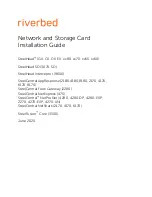
SfAR-S-6RO User Manual
www.ismacontrolli.com
DMP271en | 3rd Issue rev. 2 | 05/2022
page 7 of 19
•
•
•
•
4 Communication
4.1 Grounding and Shielding
In most cases, I/O modules will be installed in an enclosure along with other devices,
which generate electromagnetic radiation. Relays, contactors, transformers, motor
controllers, etc. are examples of such devices. Radiation can induce electrical noise into
both power and signal lines, as well as direct radiation into the module. Whether or not
the SfAR modules are immune to such effects, the interferences must be suppressed at
their source if possible to ensure the proper functioning of the entire system.
Appropriate grounding, shielding and other protective steps should be taken at the
installation stage to prevent these effects. It is recommended to at least follow the rules
below:
line power cables must be routed with spatial separation from signal and data
transmission cables;
analog and digital signal cables should also be separated;
it is recommended to use shielded cables for analog signals, cable shields should not
be interrupted by intermediate terminals;
the shielding should be earthed directly after the cable enters the cabinet.
It is recommended to install interference suppressors when switching inductive loads
(e.g., coils of contactors, relays, solenoid valves). RC snubbers or varistors are suitable for
AC voltage and freewheeling diodes for DC voltage loads. The suppressing elements must
be connected as close to the coil as possible.
4.2 Network Termination
Transmission line effects often represent the problem of data communication networks.
These problems include reflections and signal attenuation.
To eliminate the presence of reflections at the end of the cable, the cable must be
terminated at both ends with a resistor across the line adequate to its characteristic
impedance. Both ends must be terminated since the direction of propagation is
bidirectional. In case of RS485 twisted pair cable, this termination is typically
120 Ω.
4.3 Setting Module Address in RS485 Modbus Network
The following table shows how to set DIP switch to determine the address of the module.
The module address is set with the switches in the range of 0 to 31. Addresses from 32 to
255 can be set via RS485 or USB and using dedicated software tool.
Addr
SW1
SW2
SW3
SW4
SW5
0
OFF
OFF
OFF
OFF
OFF
1
ON
OFF
OFF
OFF
OFF
2
OFF
ON
OFF
OFF
OFF
3
ON
ON
OFF
OFF
OFF
4
OFF
OFF
ON
OFF
OFF




































